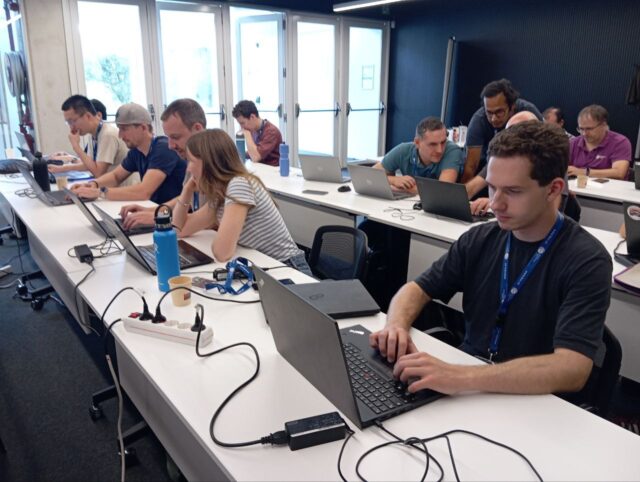This fall, a group of researchers from across Europe gathered at the Barcelona Supercomputing Center (BSC) for MNHACK , the sixth hackathon centered on the MareNostrum systems. This time, the focus was on MareNostrum 5, one of the most advanced supercomputers in the world and the fifth fastest in Europe as of November 2024.
Among the group were many CEEC-ers there to prepare our codes for optimal performance on this young machine while exploring its scalability, energy consumption, and efficiency.
- Flexi was represented by Anna Schwarz from IAG
- Neko was represented by Tim Felle Olsen from DTU and Eman Bagheri from FAU
- waLBerla was represented by Samuel Kemmler from BAM
- Alya was represented by Adrià Quintanas from BSC
For Neko, work focused on two subprojects in addition to the general hackathon activities:
- Topology Optimization: We successfully ported part of the code to GPUs, a step toward better performance for this computationally intense lighthouse case.
- Uncertainty Quantification: we worked on leveraging unused CPU resources during GPU-based simulations for uncertainty quantification in fluid analysis.
“While some issues remained unresolved by the end of the event, working side-by-side with experts helped clarify the path forward.” – Tim Felle Olsen
With waLBerla, work focused on compiling and running efficiently on MareNostrum 5, gaining critical insights into performance metrics and energy efficiency—data that will directly feed into CEEC objectives and lighthouse case four (Localized erosion of an offshore wind-turbine foundation).
For Alya, the focus was on porting the structural mechanics solver’s assembly to GPU. Additionally, we were able to discuss the evaluation of a benchmark test related to lighthouse case 1 (High Fidelity Aeroelastic Simulation of the SFB 401 Wing in Flight Conditions) with Marta Garcia.

One key highlight was being able to bring some critical challenges with the nvidia compilers directly to the experts. While some issues remained unresolved by the end of the event, “working side-by-side with experts helped clarify the path forward,” according to Tim.
Despite our ability to collaborate from remote locations, face to face events like this are still key. As summarized by Samuel, “it was very helpful to sit together in one room since we could share experience and talk to the BSC experts if we had questions about MareNostrum 5.” The hackathon environment fostered collaboration, not competition, not least because we could consult directly in real-time with BSC experts about how to make our codes run at their best on MareNostrum 5’s architecture.

